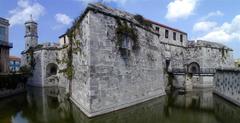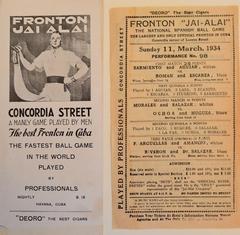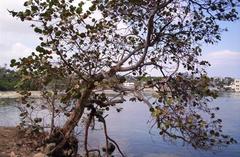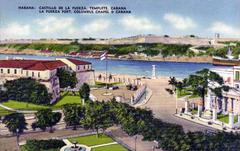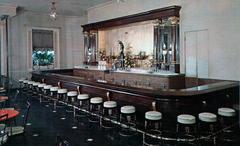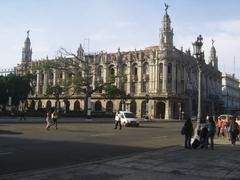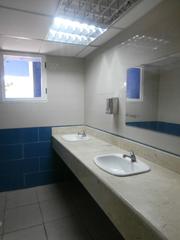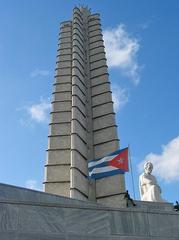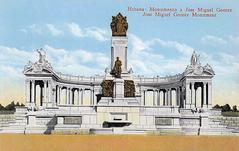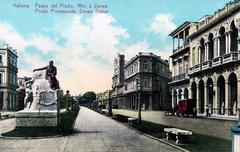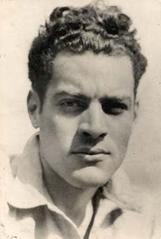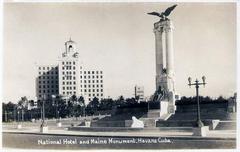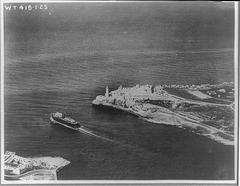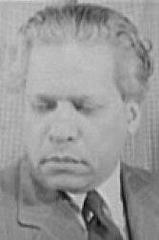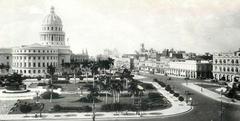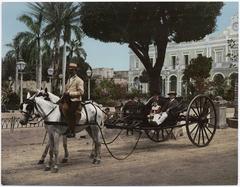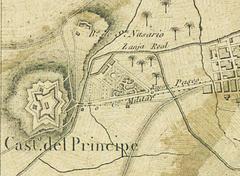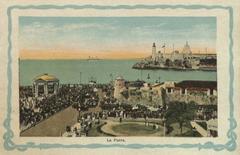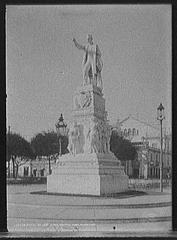
Castle Del Príncipe Visiting Hours, Tickets, and Havana Historical Sites Guide
Date: 04/07/2025
Introduction
Perched atop Loma de Aróstegui hill, Castillo del Príncipe is a striking emblem of Havana’s colonial and revolutionary history. This fortress, constructed in the aftermath of the British occupation of Havana, played a pivotal role in shaping Cuba’s defensive architecture and political landscape (Granma). Today, while its interior remains largely inaccessible due to ongoing governmental and military use, its imposing exterior and panoramic city views draw visitors eager to connect with Cuba’s multifaceted past. This guide delivers a comprehensive overview of the castle’s origins, architecture, historical relevance, visiting logistics, and practical travel tips for those wishing to discover Havana’s enduring heritage.
Table of Contents
- Origins and Strategic Purpose
- Architectural Features and Military Capacity
- Role in Cuban and Regional History
- Visiting Castillo del Príncipe: Hours, Tickets, and Tips
- Post-Prison Era and Heritage Status
- Social Memory and Local Perspectives
- Timeline of Key Events
- Frequently Asked Questions (FAQ)
- Plan Your Visit
- References
Origins and Strategic Purpose
The origins of Castillo del Príncipe trace back to the urgent fortification efforts following the British capture of Havana (1762–1763). Recognizing the city’s vulnerability, the Spanish Crown commissioned new defenses, including Castillo del Príncipe, to strengthen Havana’s protection against foreign threats (Granma). The site atop Loma de Aróstegui was chosen for its commanding view of the city. Designed by engineer Silvestre de Abarca and later modified by Brigadier Luis Huet, construction ran from 1767 to 1779. Named for Charles of Bourbon, heir to the Spanish throne, the fortress quickly became a linchpin in Havana’s defensive system (lahabana.gob.cu).
Architectural Features and Military Capacity
Castillo del Príncipe exemplifies late 18th-century Spanish military architecture. Its irregular pentagonal plan incorporates two full bastions, two semi-bastions, and a salient, surrounded by deep moats and extensive mining galleries (military-history.fandom.com). The fort’s robust limestone and red-brick construction, vaulted tunnels, and a heavy bronze gate (relocated from El Templete) reflect both innovative engineering and strategic foresight.
The fortress was originally armed with 60 artillery pieces and could house up to 1,000 soldiers. Its elevated position provided a tactical advantage, allowing defenders to monitor approaches to Havana and quickly respond to threats (Casa Hostal Cuba).
Role in Cuban and Regional History
Colonial and Independence Eras
Initially serving as a military garrison, the castle soon became a key state prison. Throughout the 19th century, it held both common criminals and political prisoners, including notable independence leaders such as Antonio Nariño (Granma). The fortress’s use as a prison intensified during periods of political unrest, particularly during the wars of independence and early republic.
Twentieth Century: Revolution and Repression
From 1926, Castillo del Príncipe officially served as Havana’s main prison, notorious for housing both common and political prisoners up until 1974. During the Batista dictatorship, the fortress became infamous for detaining revolutionaries and dissidents. On August 1, 1958, revolutionary prisoners resisted a violent assault by Batista’s forces, a defining moment symbolizing courage and sacrifice (Granma).
World War II and International Intrigue
Havana’s strategic location brought international attention during World War II. The city, including its fortresses, became a hub for espionage. In 1942, the Nazi spy Heinz Lünning was executed in Havana, underscoring the ongoing military and political significance of the city’s fortifications (The Cuban History).
Visiting Castillo del Príncipe: Hours, Tickets, and Tips
Visiting Hours and Ticket Information
Currently, Castillo del Príncipe’s interior is not open to the public due to its partial use by government and military institutions (La Habana Guide). There are no set visiting hours or ticket sales for interior tours. However, visitors may view and photograph the exterior of the fortress from public roads and nearby vantage points, especially from the Vedado district (Mapcarta).
Accessibility and Visitor Tips
- The exterior is accessible by foot, taxi, or public transportation. The location at Zapata and Calle G is easy to reach from central Havana.
- Interior access is restricted. Always respect posted signs and security personnel; do not attempt to enter restricted zones.
- Photography of the exterior is permitted from public areas. For best lighting, visit in early morning or late afternoon.
- Comfortable walking shoes are recommended due to uneven terrain around the fortress.
Nearby Attractions
While at Castillo del Príncipe, consider visiting:
- National Library of Cuba
- National Theatre of Cuba
- Quinta de los Molinos
- Calle G and Avenida de los Presidentes
- Other Havana forts: Morro Castle, La Cabaña, Real Fuerza Castle (Castles in the World)
Post-Prison Era and Heritage Status
After the closure of the prison in 1974, Castillo del Príncipe became the headquarters of the Ceremonial Battalion of the General Staff of the Revolutionary Armed Forces (military-history.fandom.com). The fortress is now recognized as a national monument and is part of Havana’s UNESCO World Heritage fortification ensemble, reflecting its enduring architectural and historical value (Granma).
Social Memory and Local Perspectives
Castillo del Príncipe remains a powerful symbol in Havana’s collective memory. Locals often advocate for its conversion into a museum to better share its rich history. The site is also featured in cultural events commemorating conservation and restoration efforts, honoring figures like Dr. Eusebio Leal Spengler (radioenciclopedia.cu).
Timeline of Key Events
- 1763: End of British occupation; Spanish fortification program begins
- 1767–1779: Construction of Castillo del Príncipe
- 1796: Antonio Nariño imprisoned in the fortress
- 1926: Officially designated as Havana’s main prison
- 1942: Nazi spy Heinz Lünning executed in Havana
- 1958: Revolutionary prisoners resist Batista’s assault
- 1974: Prison operations cease; military headquarters established
- 1982: Havana’s fortifications, including Castillo del Príncipe, inscribed as UNESCO World Heritage (Granma)
Frequently Asked Questions (FAQ)
Q: Can I visit inside Castillo del Príncipe?
A: No, the interior is not open to the public due to ongoing military and governmental functions.
Q: Are there tickets or official visiting hours?
A: There are no tickets or set visiting hours for interior tours. The exterior is viewable at any time from public spaces.
Q: Is photography allowed?
A: Yes, photography of the exterior from public roads is permitted. Always respect security restrictions.
Q: How do I get to the fortress?
A: The castle is located at Zapata and Calle G in Vedado and is easily accessible by taxi or public transit.
Q: What other sites should I visit nearby?
A: National Library, National Theatre, and other Havana fortresses such as Morro Castle and La Cabaña.
Plan Your Visit
While interior access to Castillo del Príncipe is restricted, its powerful silhouette, panoramic views, and proximity to key Havana landmarks make it an essential stop for those interested in Cuban history. Combine your visit with a walking tour of Vedado or nearby colonial sites for a richer experience. For up-to-date travel information and guided audio tours, download the Audiala app and follow our social channels for news and travel inspiration.
Summary and Call to Action
Castillo del Príncipe stands as a monument to Havana’s turbulent past and enduring spirit. From its origins as a military bastion to its legacy as a prison, the fortress encapsulates Cuba’s struggles and triumphs across centuries (Granma). Although interior access is limited, the site’s imposing presence, panoramic city views, and historical significance make it a must-visit for travelers exploring Havana’s colonial and revolutionary heritage. Explore the surrounding Vedado district, visit nearby attractions, and immerse yourself in the stories that shaped Cuba. For more travel tips and comprehensive guides, explore our related posts and keep connected with Audiala for the latest updates.
References
- Castillo del Príncipe Visiting Hours, Tickets, and History of Havana’s Historic Fortress, 2019, Granma (Granma)
- Exploring Castle Del Príncipe: Visiting Hours, Tickets, and Architectural Marvels in Havana, 2025 (Mapcarta)
- Castillo del Príncipe in Havana: History, Visiting Information, and Travel Tips, 2025 (lahabana.gob.cu)
- Nazi Spy Executed in Cuba 1942, 2012, The Cuban History (The Cuban History)
- Castillo del Príncipe in Havana: Visiting Hours, Tickets, and Historical Insights, 2025 (Castles in the World)
- Castillo del Príncipe Overview and Visitor Information, 2025 (Casa Hostal Cuba)
- Havana Historical Sites and Guides, 2025 (La Habana Guide)
- Castillo del Príncipe Military History, 2025 (Military History Fandom)
- Cultural Events and Heritage in Havana, 2025 (Radio Enciclopedia)
- Mapcarta: Castillo del Príncipe Location and Nearby Attractions, 2025 (Mapcarta)








